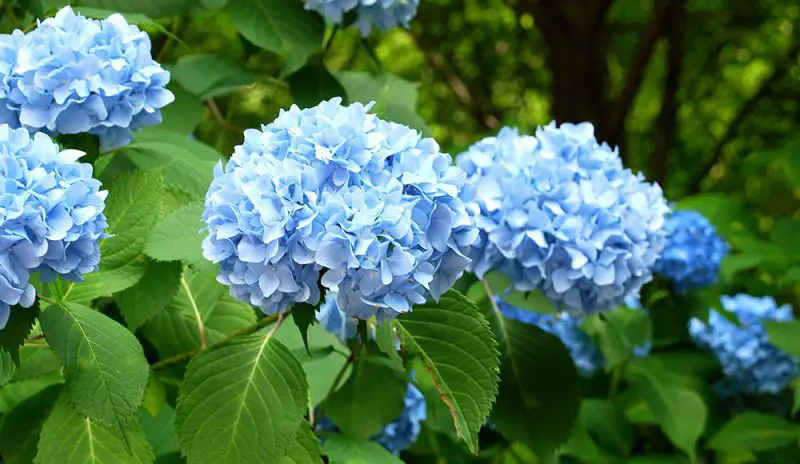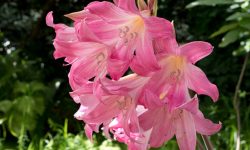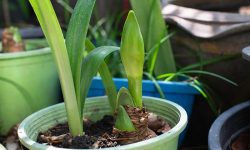Hydrangeas are highly cherished ornamental shrubs, celebrated for their abundant clusters of blue, pink, white, or purple flowers that add vibrant beauty to gardens all summer long. However, many gardeners face the frustrating challenge of hydrangeas not blooming as expected or producing fewer flowers each year. Understanding the plant’s natural growth cycle, pruning habits, and care requirements is the key to encouraging these stunning shrubs to bloom again quickly and remain vibrant all season.
Making hydrangeas bloom again fast involves more than just watering and fertilizing. It requires paying close attention to light exposure, soil quality, and even the timing of pruning. When cared for correctly, hydrangeas reward gardeners with abundant, long-lasting blossoms that transform any garden into a colorful paradise.
Understanding the Blooming Cycle of Hydrangeas

Knowing how hydrangeas produce their flowers is essential before attempting to encourage them to bloom again. Most hydrangea varieties bloom on old wood, meaning flower buds develop on stems grown during the previous season. If these stems are damaged by frost, cut back too heavily, or pruned at the wrong time, the plant may fail to bloom.
Some newer hydrangea varieties, such as remontant or reblooming types, bloom on both old and new wood, allowing for multiple flushes of flowers throughout the growing season. Understanding which type of hydrangea you have will help you tailor your care approach for faster blooming.
The blooming cycle also depends heavily on environmental factors such as daylight hours, soil nutrients, and consistent moisture. Providing conditions that mimic the plant’s natural habitat can significantly boost flower production and ensure blooms stay vibrant for weeks.
Providing the Right Light for Faster Blooming
Light is one of the most important factors in encouraging hydrangeas to bloom quickly. While hydrangeas appreciate partial shade, especially in hotter climates, they still require several hours of bright, indirect sunlight daily to form buds. Too much shade results in lush foliage but very few flowers.
If your hydrangeas are planted in a heavily shaded area, consider relocating them to a spot where they receive morning sunlight and afternoon shade. Morning sunlight is gentler and helps stimulate bud formation without scorching the leaves. In cooler climates, hydrangeas can tolerate more direct sunlight, which often results in faster and more abundant blooming.
Maintaining consistent light exposure also helps flowers remain vibrant for longer. Avoid sudden changes in light conditions, such as moving potted hydrangeas frequently, as this can stress the plant and cause buds to drop prematurely.
Pruning Techniques to Encourage Re-Blooming
Proper pruning is crucial if you want hydrangeas to bloom again fast. For varieties that bloom on old wood, heavy pruning in late fall or early spring often removes the flower buds that were formed the previous year. The best time to prune these types is immediately after flowering, allowing new growth to mature and set buds for the next season.
For hydrangeas that bloom on new wood, pruning in late winter or early spring can stimulate vigorous new shoots, which will produce flowers later in the season. Cutting back spent blooms and removing weak or dead stems encourages the plant to redirect energy toward bud development.
Pruning should always be done carefully to avoid damaging healthy stems. Using clean, sharp pruning shears ensures clean cuts, reducing the risk of disease and promoting faster healing, which in turn supports healthy blooming.
Feeding Hydrangeas for Lush and Vibrant Flowers
Nutrient-rich soil is essential for hydrangeas to bloom quickly and produce vibrant flowers. A balanced fertilizer containing nitrogen, phosphorus, and potassium is ideal, but phosphorus plays the most significant role in encouraging bud formation. Using a fertilizer with a higher middle number, such as 10-30-10, can boost flowering significantly.
Applying fertilizer in early spring as new growth begins helps strengthen the plant and prepares it for the blooming season. Feeding again after the first flush of blooms can encourage a second round of flowering in reblooming varieties. However, excessive fertilization, especially with too much nitrogen, can lead to abundant leaf growth but few flowers.
Organic compost or well-rotted manure can also enrich the soil naturally, improving both nutrient content and moisture retention. Hydrangeas thrive best when soil fertility is maintained consistently throughout the growing season.
Watering Hydrangeas Correctly for Fast Blooming
Hydrangeas are moisture-loving plants, and consistent watering is crucial for quick and healthy blooming. Insufficient water during the bud formation stage can cause flowers to be smaller or fail to open entirely. The soil should remain evenly moist but never waterlogged, as excessive moisture can lead to root rot.
Deep watering is more effective than frequent shallow watering, as it encourages deeper root growth, making the plant more resilient to drought and supporting larger, healthier blooms. Early morning watering is recommended to allow excess moisture on leaves to evaporate during the day, reducing the risk of fungal diseases.
During hot and dry weather, mulching around the base of the plant helps retain soil moisture and keep roots cool. A two to three-inch layer of organic mulch such as shredded bark or compost not only conserves water but also adds nutrients as it breaks down.
Adjusting Soil pH for Vibrant Flower Colors
The vibrancy and color of hydrangea flowers are influenced by soil pH, especially in varieties like bigleaf hydrangeas. Acidic soils with a pH below 6.0 tend to produce blue or purple blooms, while alkaline soils above 7.0 result in pink or red flowers. Neutral soil pH often yields shades of lavender or mixed colors.
To enhance flower color vibrancy, gardeners often adjust soil pH. Adding aluminum sulfate or sulfur can acidify the soil, deepening blue hues, while lime can raise pH levels, intensifying pink shades. Any soil amendments should be applied gradually to avoid shocking the plant.
Healthy, vibrant colors are not only aesthetically pleasing but also a sign of proper nutrient absorption, which directly affects blooming speed and flower quality.
Protecting Hydrangeas from Stress for Long-Lasting Blooms
Even if hydrangeas bloom successfully, stress can shorten the lifespan of the flowers. High temperatures, strong winds, and sudden changes in weather can cause blooms to wilt or fade quickly. Providing protection during extreme conditions ensures flowers remain fresh and vibrant for longer.
Planting hydrangeas in sheltered locations or using garden screens can reduce exposure to strong winds. During heatwaves, shading the plants with garden cloth or relocating potted hydrangeas to a cooler spot can prevent stress. Regular watering during these periods is also essential to keep flowers hydrated.
Avoid frequent relocation or repotting when buds are forming, as disturbances to the roots can lead to bud drop or delayed blooming. Maintaining stable growing conditions is key to keeping flowers looking their best throughout the season.
Encouraging Multiple Bloom Cycles in One Season
With the right care, some hydrangea varieties can bloom more than once in a single growing season. After the first flush of flowers fades, deadheading spent blooms encourages the plant to produce new shoots, which may develop additional buds.
Providing a light application of phosphorus-rich fertilizer and maintaining consistent watering after the first bloom can stimulate another flowering cycle. Reblooming hydrangeas, in particular, respond well to this method, rewarding gardeners with extended periods of color well into late summer or early fall.
Healthy plants with strong root systems are more likely to rebloom, so regular feeding and soil care throughout the year will improve their overall flowering potential.
Caring for Hydrangeas After Blooming for Future Flowers
Post-bloom care plays a significant role in ensuring that hydrangeas bloom abundantly the following year. Once the flowering season ends, reducing watering slightly and allowing the plant to rest helps it conserve energy. However, it should not be allowed to dry out completely, as healthy roots are essential for next year’s growth.
Pruning dead or weak stems after blooming, along with applying compost or organic mulch, helps the plant recover and strengthens it for the next season. For old-wood bloomers, avoid heavy pruning after this period, as it may remove the buds for the following year.
Providing ongoing care even when the plant is not in bloom ensures stronger stems, healthier foliage, and more prolific flowering when the next blooming cycle begins.
FAQs about How to Make Hydrangeas Bloom Again
Why Are My Hydrangeas Not Blooming?
Hydrangeas may fail to bloom due to incorrect pruning, frost damage, or too much shade. Many varieties form buds on old wood, so cutting stems at the wrong time or exposing them to extreme cold can remove flower buds. Ensuring enough sunlight and proper pruning timing encourages healthy bud development.
How Long Does It Take for Hydrangeas to Bloom Again?
The time it takes for hydrangeas to rebloom depends on the variety. Old-wood bloomers may take an entire growing season, while reblooming varieties can produce new flowers within weeks after the first flush if properly fed and watered. Consistent care and deadheading faded blooms speed up the process.
What Fertilizer Helps Hydrangeas Bloom Fast?
A fertilizer high in phosphorus, such as 10-30-10, promotes faster and more abundant flowering. Phosphorus encourages bud formation and supports vibrant blooms. Fertilizing in early spring and lightly after the first blooming cycle can trigger additional flowers in reblooming varieties.
Can Hydrangeas Bloom Twice in One Season?
Yes, some hydrangea types, especially reblooming varieties, can flower twice in one season. Deadheading spent blooms, feeding with a phosphorus-rich fertilizer, and maintaining consistent moisture help encourage new bud development for a second round of flowers.
How Do I Keep Hydrangea Flowers Vibrant for Longer?
To keep hydrangea flowers fresh and colorful, provide consistent watering, protect them from harsh sun and strong winds, and maintain moderate soil moisture. Mulching around the base of the plant helps regulate soil temperature and retain moisture, extending the bloom’s lifespan.
Final Thoughts on Making Hydrangeas Bloom Again
Encouraging hydrangeas to bloom again quickly and maintaining their vibrancy requires understanding their natural habits and creating the best possible growing environment. Proper pruning, consistent watering, nutrient-rich soil, and the right light and temperature conditions all contribute to faster bud development and long-lasting flowers.
Patience is key, as hydrangeas respond best to steady and thoughtful care rather than sudden changes. Once you establish the right routine, these stunning shrubs will reward you with abundant clusters of colorful, vibrant blooms that return year after year, making them a highlight of any garden.






